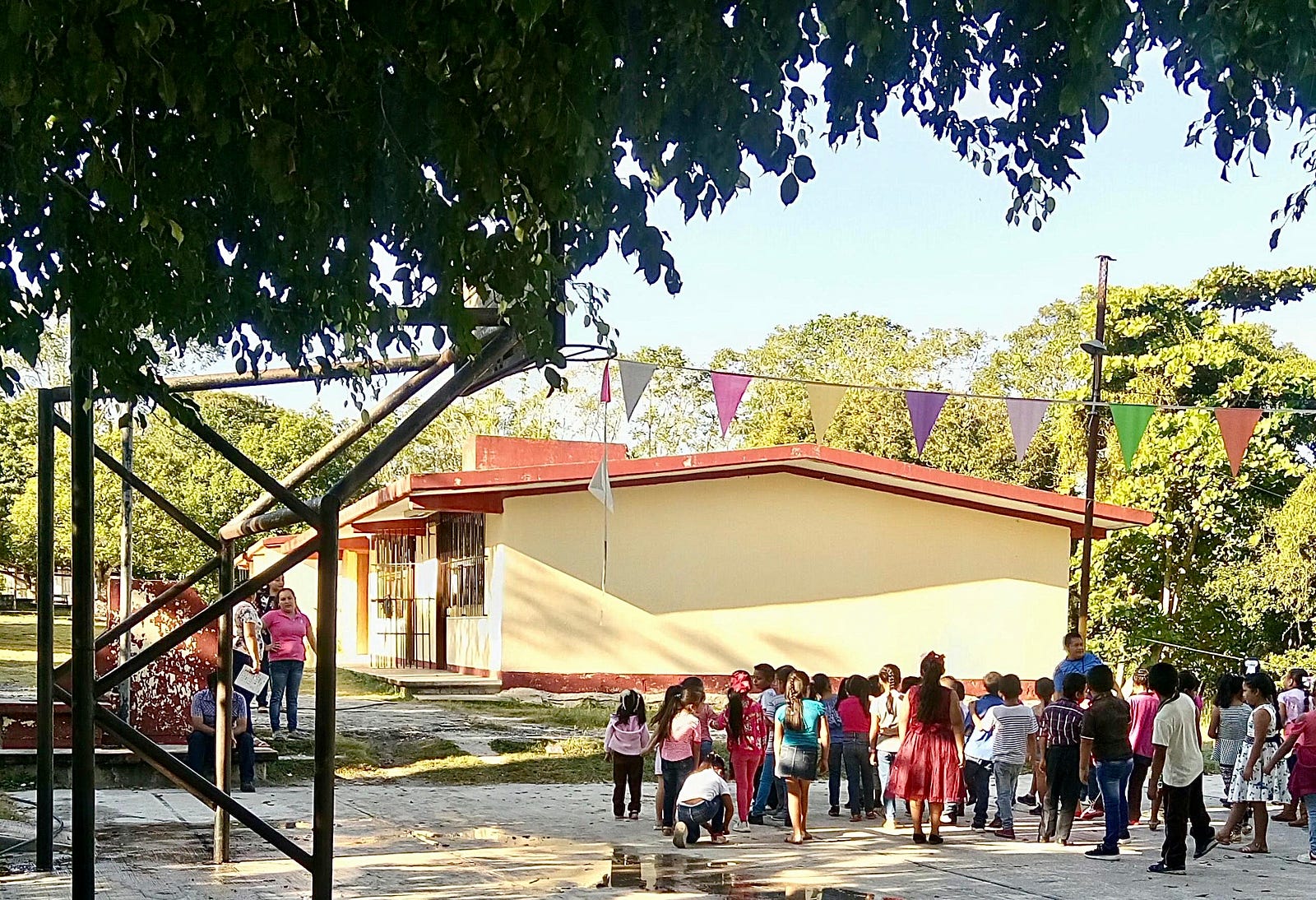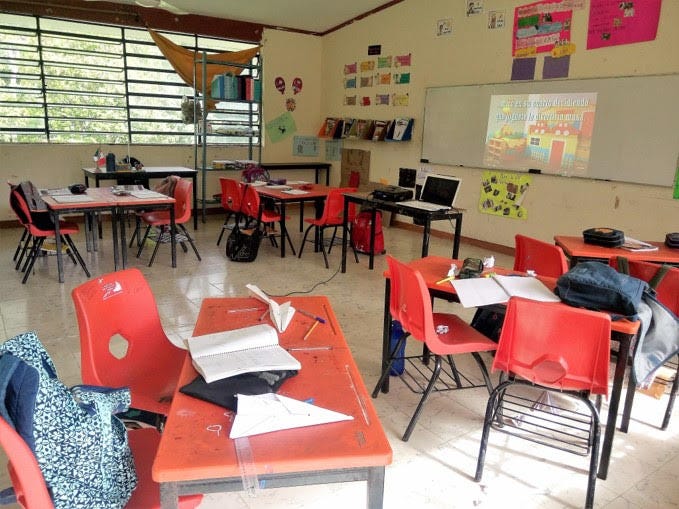How one teacher in a rural Mexican classroom brings the gift of joyful reading
CommonLit works with over 100 public schools in México that have an expansive range of conditions. Some resemble walled cloisters in bustling neighborhoods; other campuses are nestled against hilly rural landscapes. The thing that strikes us the most, however, is the disparity in access to educational resources. There are schools that are eagerly using state-of-the-art computer labs, schools that cannot afford to turn on the electricity, and everything in-between.
Despite their differences, all of the schools stand to benefit from mission-driven education organizations like CommonLit. We’re aiming to improve educational outcomes by addressing inadequate reading comprehension skills, which México’s National Institute for the Evaluation of Education (INEE) has identified as a key barrier to effective and productive participation in today’s society for young people in this country. Through our interviews with dozens of teachers, we’ve come to understand that the problem stems from a lack of engaging and up-to-date reading resources that tap into students’ innate curiosity.
In rural Campeche, México, we found Héctor Armando Huchin Uc, a 6th-grade teacher at Guadalupe Victoria Elementary School who is using CommonLit to change that situation, one reading lesson at a time.
We first connected with Héctor and his 6th-graders after they submitted the winning entry to our photo contest based on the story La señorita Nelson ha desaparecido (Ms. Nelson is Missing!) by Harry Allard. For seven years, Héctor has dedicated himself to improving learning conditions at his school. His students face a range of challenges, such as frequent migration and absenteeism due to the community’s poverty and lack of opportunities. Even with assistance from the government, which has allowed the school to acquire books and a few computers, shortages continue to be felt. Héctor believes his 6th-graders need an extraordinary resource in the face of these challenges, and in CommonLit, he has found just that.
What kinds of reading resources are available in your community?
Hardly any reading goes on here. We have a school library, but we’re lacking in diverse texts. The texts that we do have here don’t interest my students. We don’t have any new books on topics they’re actually curious about.
How did you find out about CommonLit?
At the start of this school year, one of my resolutions was to get my students reading more, because my school has a reading comprehension problem. I found out about CommonLit through SINADEP’s platform, and I gave it a try with the kids. It worked.
What’s your process like for planning a lesson with CommonLit?
I select texts according to the curriculum. Every day we dedicate half an hour to reading, and that’s when CommonLit comes in. Sometimes I let the kids pick a text that intrigues them. Since they don’t have computers at home and there’s limited internet at school — because depending on wind and rain the signal goes in and out — what I do is I download the lessons when I’m at my co-op. I print them out for the kids, and when there’s internet, I project the lessons and incorporate Guided Reading Mode. I explain to my students that it’s another great way to practice reading comprehension.
What do your students love the most about CommonLit?
My students feel motivated to read and to learn about topics that they can’t find anywhere else as a result of their precarious living conditions. They love finding texts that are different from ones they’re already familiar with. For example, one text that caught their eyes was ¡La verdadera historia de los tres cerditos! [The True Story of the Three Little Pigs!]. Also, the Guided Reading questions have helped many of my struggling students understand a lot better what they’re reading.

Your class produced the winning photo for our contest based on the story, La señorita Nelson ha desaparecido. What was it like to read this story with your class?
My students actually picked out this text on a day when they got to choose. It caught their attention, so we read it. When we were analyzing the title, they all thought it was going to be about a kidnapping! But they soon realized that wasn’t the case at all. When I found out about the photo contest, I asked my students how they would represent the story. They rearranged the classroom, leaving it in disarray. They reflected on what they had read. We examined the original photo and discussed how we could improve upon it. We went through various takes, and in the end, we won the prize! That was really motivating for my students.

What motivates you to continue using CommonLit?
The smile that it brings out in my students when they get to experience a new way to learn. I do my best to make sure barriers don’t hold my students back. And to make sure they find joy in what they’re learning.
Challenges remain, but Héctor is committed to resolving them. His next goal for his students is to help them develop argumentation skills using CommonLit’s discussion questions. It’s a goal he knows they can achieve.
Original interview (in Spanish) / Entrevista original (en español)
Get involved:
- Explore CommonLit’s Spanish library;
- Contact us to learn more about CommonLit’s work in México;
- Make a donation to support CommonLit’s non-profit work.


